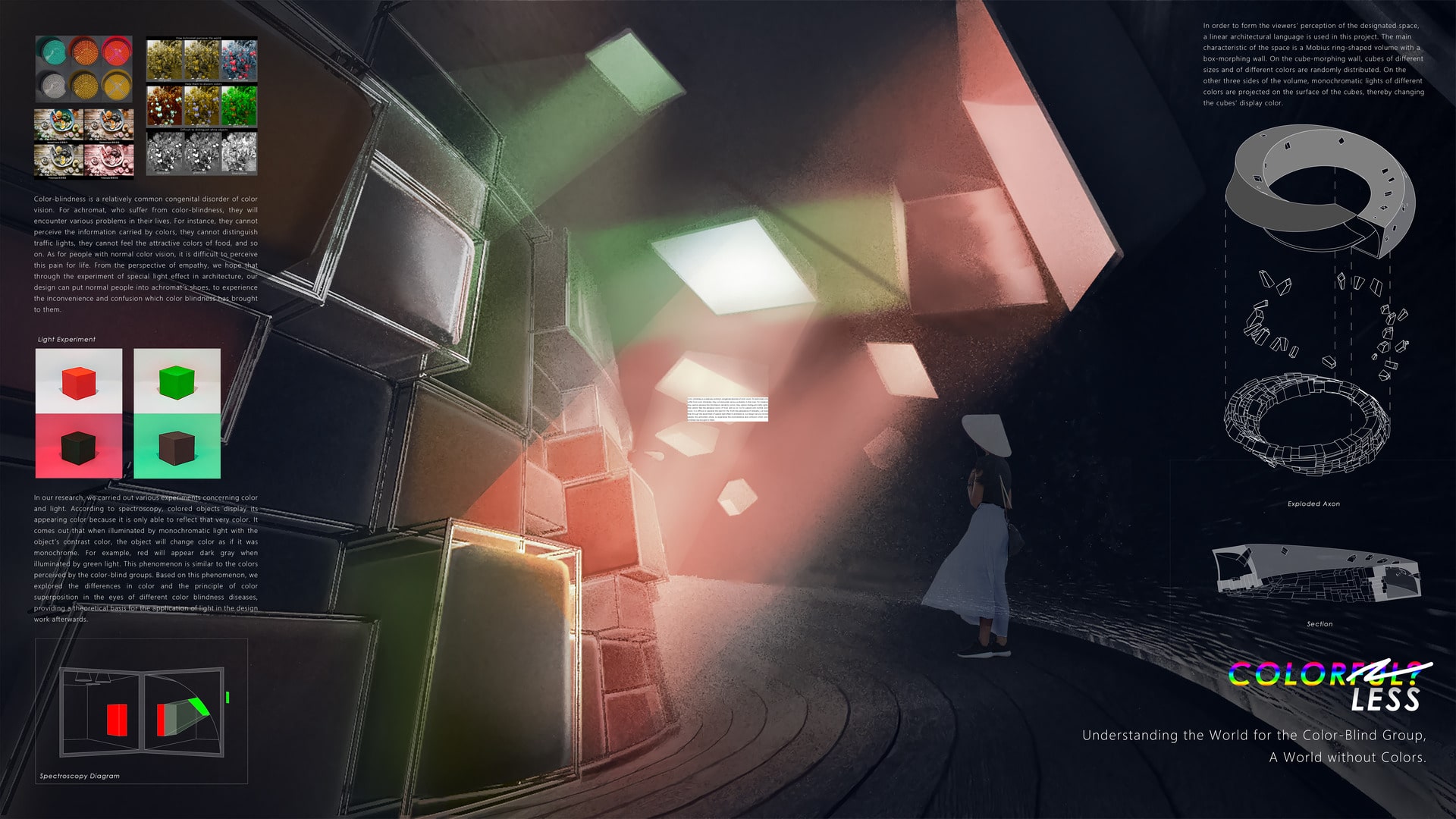Project Description
Understanding the World for the Color-Blind Group, A World without Colors. Color-blindness is a relatively common congenital disorder of color vision. For achromat, who suffer from color-blindness, they will encounter various problems in their lives. For instance, they cannot perceive the information carried by colors, they cannot distinguish traffic lights, they cannot feel the attractive colors of food, and so on. As for people with normal color vision, it is difficult to perceive this pain for life. From the perspective of empathy, we hope that through the experiment of special light effect in architecture, our design can put normal people into achromat’s shoes, to experience the inconvenience and confusion which color blindness has brought to them. In our research, we carried out various experiments concerning color and light. According to spectroscopy, colored objects display its appearing color because it is only able to reflect that very color. It comes out that when illuminated by monochromatic light with the object’s contrast color, the object will change color as if it was monochrome. For example, red will appear dark gray when illuminated by green light. This phenomenon is similar to the colors perceived by the color-blind groups. Based on this phenomenon, we explored the differences in color and the principle of color superposition in the eyes of different color blindness diseases, providing a theoretical basis for the application of light in the design work afterwards. In order to form the viewers’ perception of the designated space, a linear architectural language is used in this project. The main characteristic of the space is a Mobius ring-shaped volume with a box-morphing wall. On the cube-morphing wall, cubes of different sizes and of different colors are randomly distributed. On the other three sides of the volume, monochromatic lights of different colors are projected on the surface of the cubes, thereby changing the cubes’ display color.
